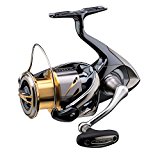Atlantic Salmon Reproduction
Atlantic Salmon spawn from October through to November. The peak of spawning usually occurring in late October.
The start and finish is different throughout their distribution depending largely on the water temperature.
As spawning time nears, males undergo significant changes in head shape. The head elongates and a pronounced hook, or kype, develops on the tip of the lower jaw. The jaw essentially turns up, making eating very difficult.
The nesting site is chosen by the female, usually a gravel-bottom riffle above a pool. This is in contrast to the many bass species where the male arrives several days before the female and is responsible for building the nest and rearing the fry.
Building a Redd
The female digs the nest, often called the redd by professional anglers and in many books and publications, by flapping strongly with her caudal fin and peduncle while on her side. The female rests during redd preparation while the male continues to court her and drive away other males.
When the redd is finished the male aligns himself next to the female, the eggs and sperm are released and the eggs are fertilized during the intermingling of the gametes.
- Female Atlantic Salmon release about 750 eggs per pound of her body weight on each spawning cycle. The eggs are pale orange in color, large and spherical and somewhat adhesive for a short time.
- The female then covers the eggs with gravel, using the same method used to create the nest and are covered by as much as 12.7 to 25 cm./4.7 to 9.7 inches.
During each spawning session, females may mate as many as 3 or more times while the males continue to drive off and protect the nest from intruders for the duration of spawning.
Spawning can last several weeks with about 90% of the Salmon dying during this time.
Life Cycle of Atlantic Salmon
There is a common myth that all Atlantic Salmon die after spawning, but this is not true.Some salmon may spawn as many as 4 times before death.
*Surviving Salmon are called Kelts. They have a narrower body shape than that of pre-spawned salmon.
Timing of Hatching Eggs
Hatching of the eggs usually occurs in April but the young remain in the gravel until the yolk sac is absorbed and finally emerge in May or June of the year following egg deposition.
The newly hatched salmon remain in fast moving water until they are about 65mm/2.6 inches long. The fish are now called parr and their growth is slow.
Atlantic Salmon are then classified as smolts when they reach a length of 12 to 15 cm/4.7 to 5.9 inches at which point they head off to the sea.
Once at sea they grow rapidly.


